In 1951, Reading was looking forward to reconstruction and expansion after a decade of hardship and austerity because of the Second World War.
It was also the year that The Museum of English Rural Life was established.
To mark its 70th birthday, The MERL has invited an array of 51 Voices, including Reading Museum, to reflect on mid-century ideas through fifty-one different objects in The MERL collection. You can explore all the Voices and objects on The MERL website.
This blog presents Reading Museum's contribution to 51 Voices, reflecting on our town in 1951 as it was looking to the future.
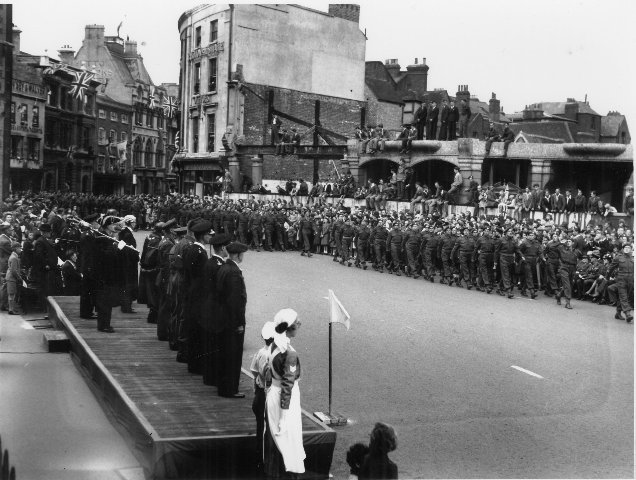
A Victory in Europe (VE) Day Parade, showing Friar Street bomb damage, May 1945. Reading Chronicle Collection. Museum no. 1980.36.A744.3
Even after the war ended, shortages and rationing continued. The bombsite in Friar Street remained ‘an ugly scar on the face of the town’, and Reading felt shabby after years of neglect.
This was compounded by the harsh winter of 1947, which was followed by some of the worst floods ever seen in the Thames Valley. Over 1,600 homes became submerged in Reading alone.
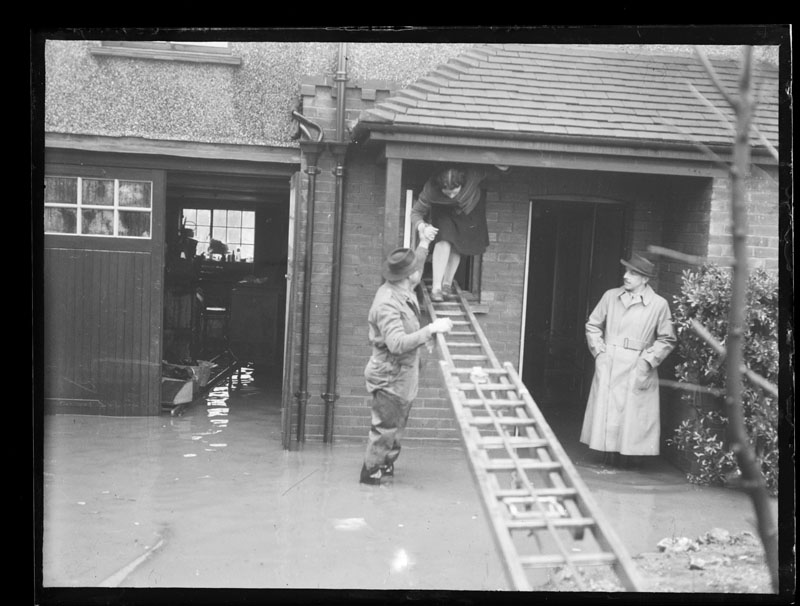
Mrs Switler being helped from her flooded home, Tilehurst, Reading. Photograph from Reading Chronicle Collection - March 1947. Reading Museum object no. 1980.36.A921.3
Post-war, whilst the town’s major industries were stepping up production (especially for export), companies like Huntley & Palmers, Reading’s world-famous biscuit makers, still faced challenges.
The rationing of ingredients lasted well into the 1950s, whilst severe labour shortage exacerbated production problems.
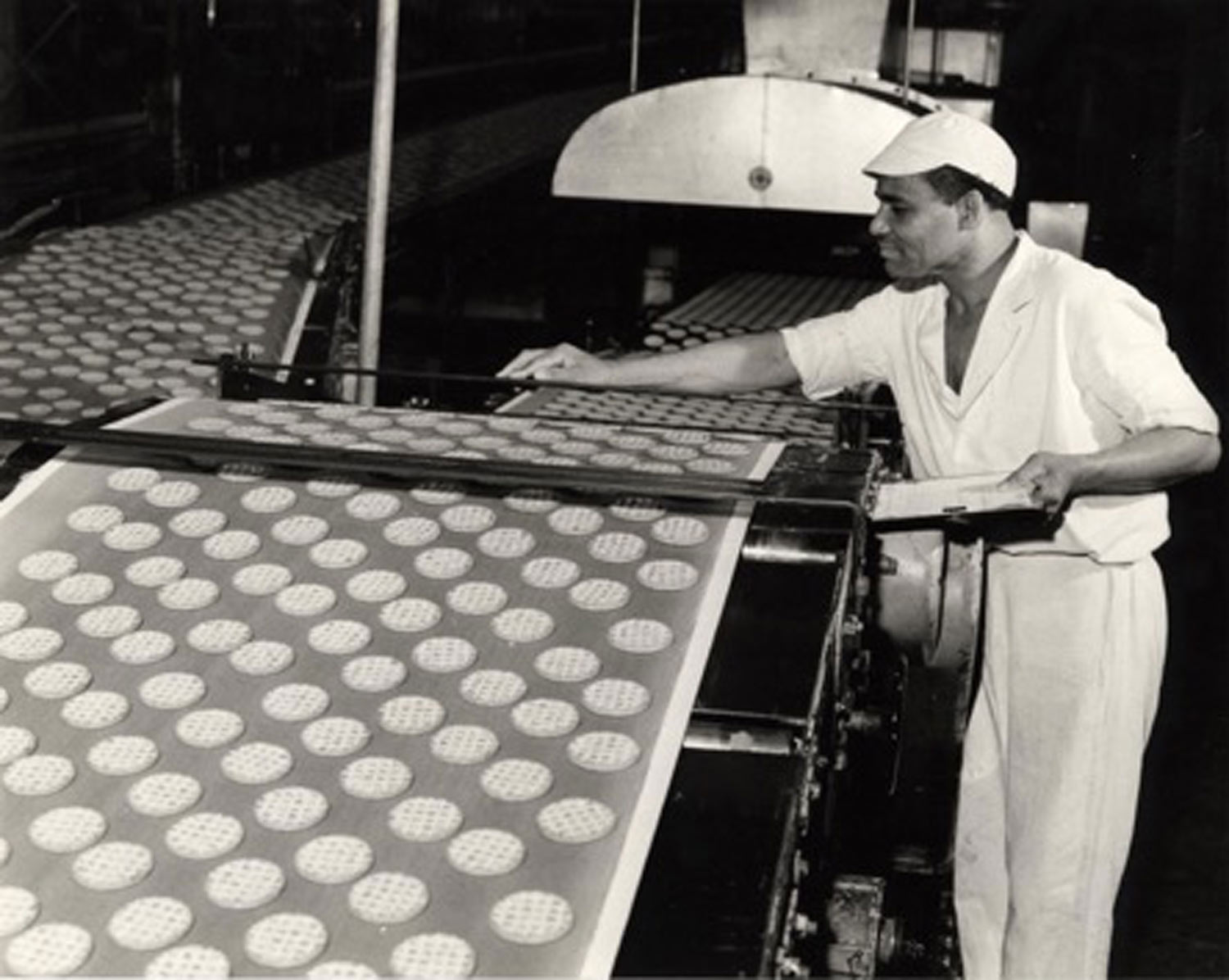
Huntley & Palmers employee checking Cornish Wafers, around 1960. Reading Museum object no. 1997.130.314
These labour shortages were felt in both the private and public sector, and by the late 1940s overseas workers were being recruited from the Commonwealth, British colonies and Ireland to help with post-war reconstruction.
The arrival of the MV Empire Windrush in 1948 represents an iconic image of migration and has given its name to the first generation of Caribbean migrants. From the 1950s, thousands of workers came to Reading, especially from the Caribbean, Indian, Ireland and Pakistan. The new arrivals of the 1950s and 1960s have had a lasting contribution to Reading’s social, economic and cultural life. You can learn more about Reading's Windrush generation on our Windrush community pages.
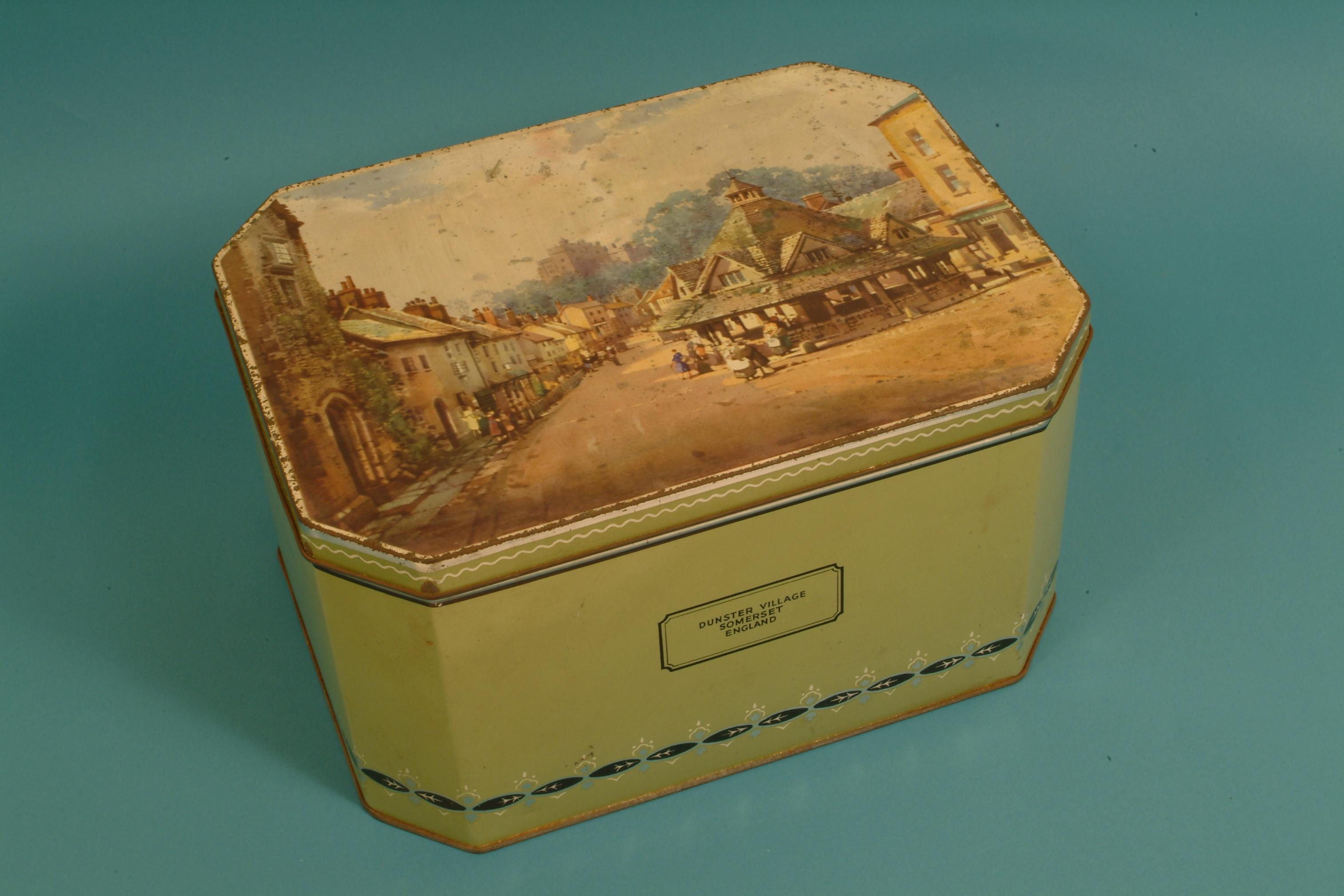
Huntley & Palmers tin ‘Dunster Village’, 1951-1952. Reading Museum object no. 1992.2.384
Despite facing challenges to making its biscuits, Huntley & Palmers was able to resume the manufacturing of its famous decorative biscuit tins. Many featured pretty and cheery rural and coastal scenes.Tin plate was rationed and alternative materials like aluminium were sometimes used.
The above 1951 Huntley & Palmers biscuit tin features a watercolour of the historic Dunster Village in Somerset. A slice of ‘olde England’ that was much visited by holiday makers to the nearby seaside resort of Minehead before the Second World War.
The exteriors of picturesque cottages often concealed homes that were in poor condition and lacked any form of modern heating, lighting, bathrooms and kitchens.
The picture in urban areas was often the same, due to both sub-standard accommodation and major housing shortages. This followed the stopping of house building during the war amidst extensive bomb damage.
These housing shortages were felt throughout Reading. It was calculated in 1945 that 3,750 families lacked homes of their own and were living in crowded conditions until they were able to move. The situation was further exacerbated by an 11% increase on the pre-war population recorded in the 1951 census.
In these circumstances, vacant military camps became potential living accommodation for squatters. In Tilehurst, Ranikhet Camp was taken over by 80 families, with 200 people moving onto the site between 24 to 27 August 1946. Reportedly, squatters ignored the military guards as they moved in. This followed the occupation of a camp in Whitley by forty families a few days earlier.
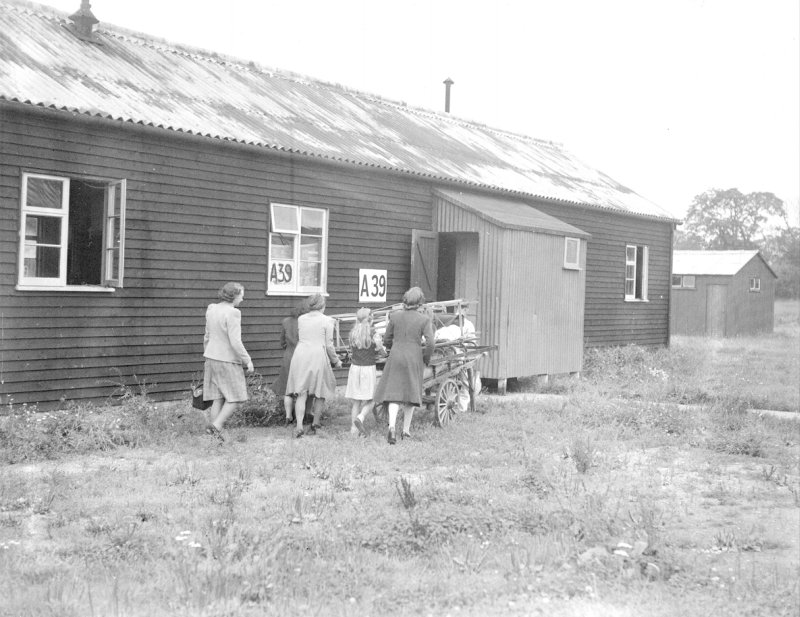
Squatters moving into army huts at Ranikhet Camp, Reading. Photograph from Reading Chronicle Collection - August 1946. Reading Museum object no. 1980.36.A862.2d
The housing need was being met by the building of traditional and pre-fabricated homes by Britain’s local councils, both rural and urban, with substantial government subsidies provided by the 1946 Housing Act. Reading started to build pre-fabs as soon as the war ended in 1945, and by July 1950 it was celebrating the completion of its 1000th council house. The Mayor of Reading, Alderman A. F. Clark, handed over the keys to Mr K. J. Slater and his family in Tilehurst.
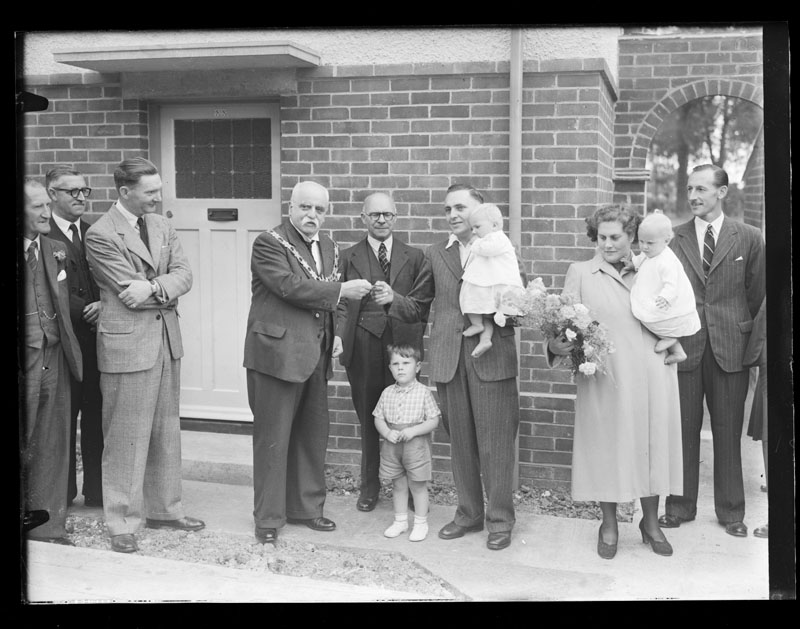
1000th Council House in Reading. Reading Chronicle Collection. July 1950. Reading Museum object no. 1980.36.B265.1
By 1952, large-scale housing estates were being built on former agricultural land on the outskirts of Reading.
At Southcote, beside the main Bath Road, the Council acquired 150 acres of land for a large new housing estate, with schools, shops, health clinic, pubs and churches being added over the next ten years.
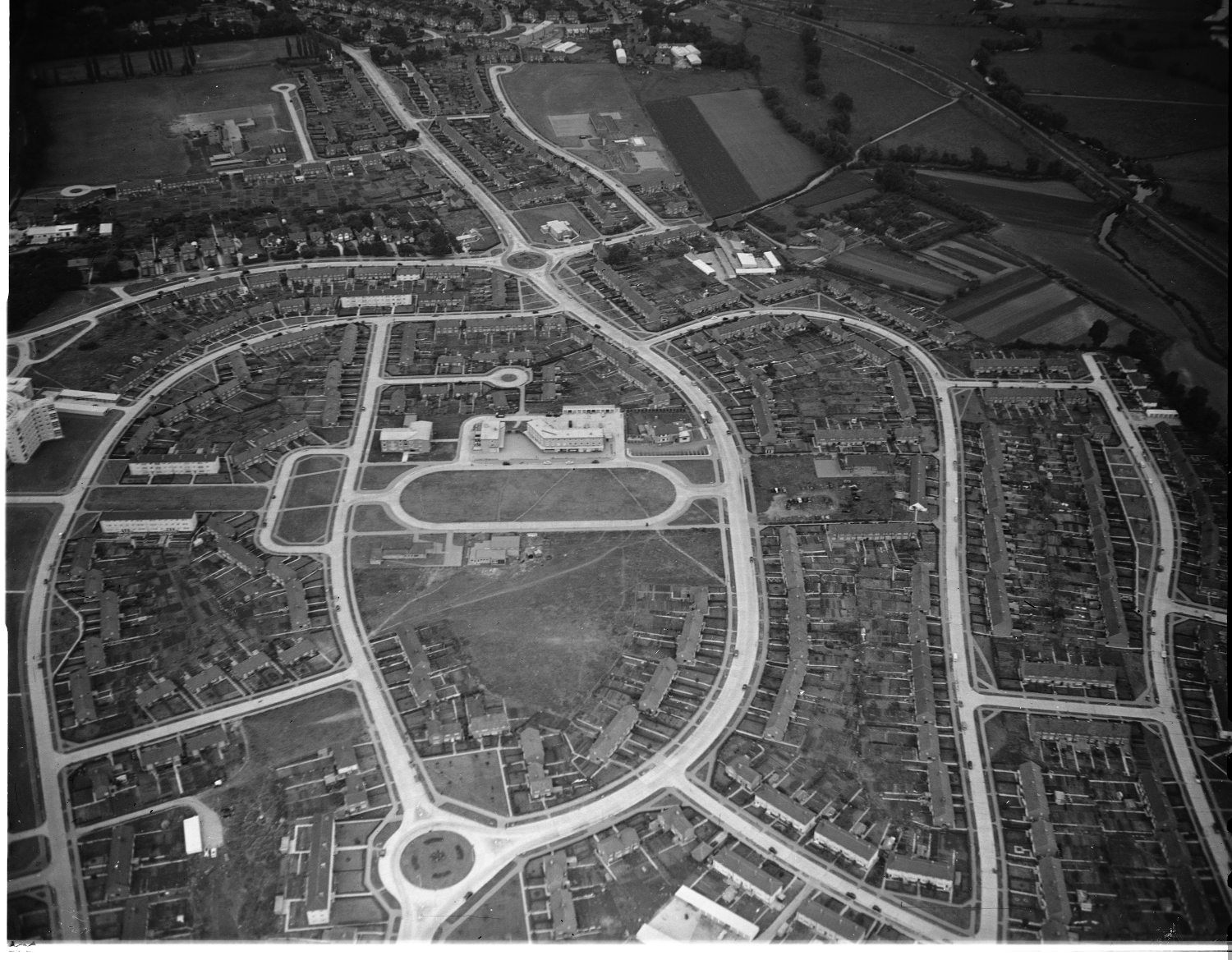
Aerial view of the Southcote housing estate by 1960. Reading Museum object no. 1980.36.D187.6a-b
To add to the housing problems, Field Road in Coley was one of several areas in Reading to suffer from subsidence damage, including a major incident in September 1951, when a large section of the street partially collapsed.
The problem was caused by the chalk mines that were created in and around Reading from the 18th century onwards to extract chalk for use in making bricks.
Over the next 200 years, people forgot where most of the mines were and houses were built over many of them.
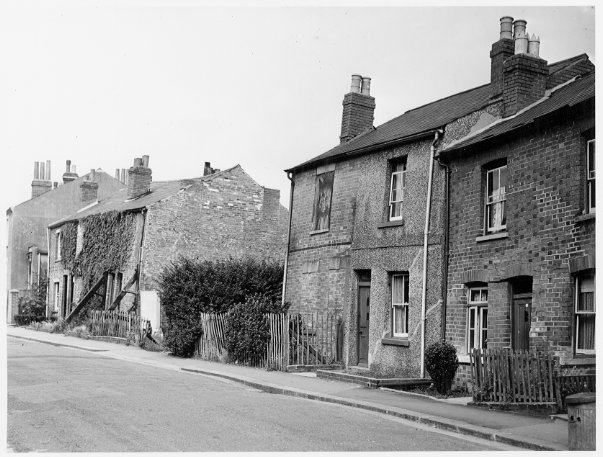
Mining Subsidence at Field Road, Reading, September 1951. Photograph from Reading Chronicle Collection. Museum object no. 1980.36.B395.2c
The expansion and development of the University of Reading, with purchase of Whiteknights for a new landscape campus in 1947, and the establishment of The MERL in 1951, were key parts of the town’s post-war development. Reading Museum has always had a close working relationship with The MERL. In fact, a model of a Barrett, Exall & Andrewes threshing machine given by Reading Museum to the University of Reading’s Faculty of Agriculture was transferred to The MERL in January 1951.
Today, we form a strategic partnership called Museums Partnership Reading, part of ACE's National Portfolio 2018-2022. We work together to provide cultural opportunities for Reading’s young people and diverse communities, through schools, volunteering, digital engagement and exhibitions.
1951 marked a tipping point in Reading’s growth, from a town that had hardly changed since 1939, towards the major social, economic and architectural developments that would change the face of Reading forever.
The following year saw another symbolic change with Queen Elizabeth II's accession to the throne on 6th February 1952.
References
Daphne Phillips (1977), Coronation Reading: A portrait of the town as it was in 1953, Reading Libraries
Joan Dills (2019) Reading: A History, Carnegie Publishing
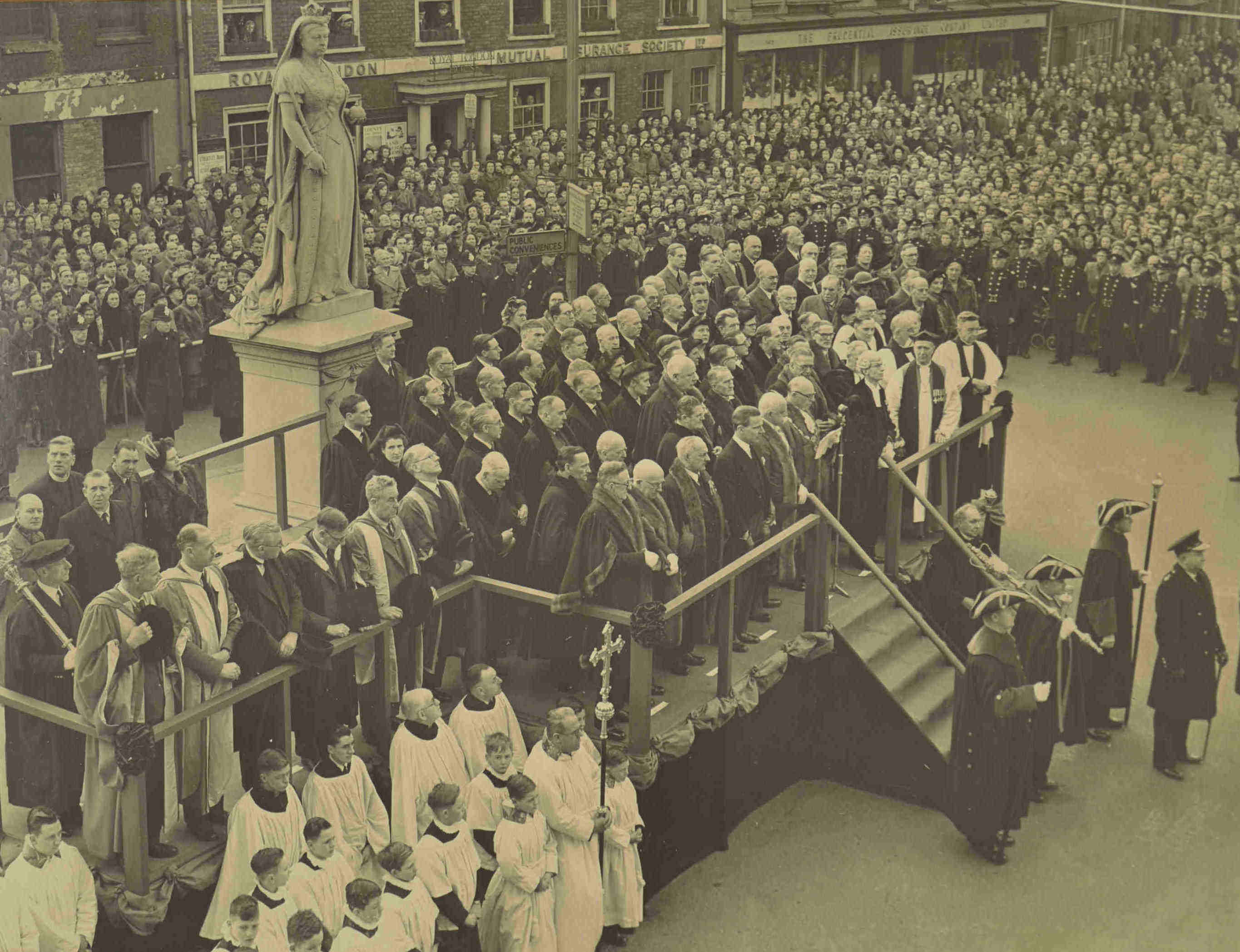
Proclamation of Queen Elizabeth II at Reading beside Queen Victoria's statue on February 8th 1952





